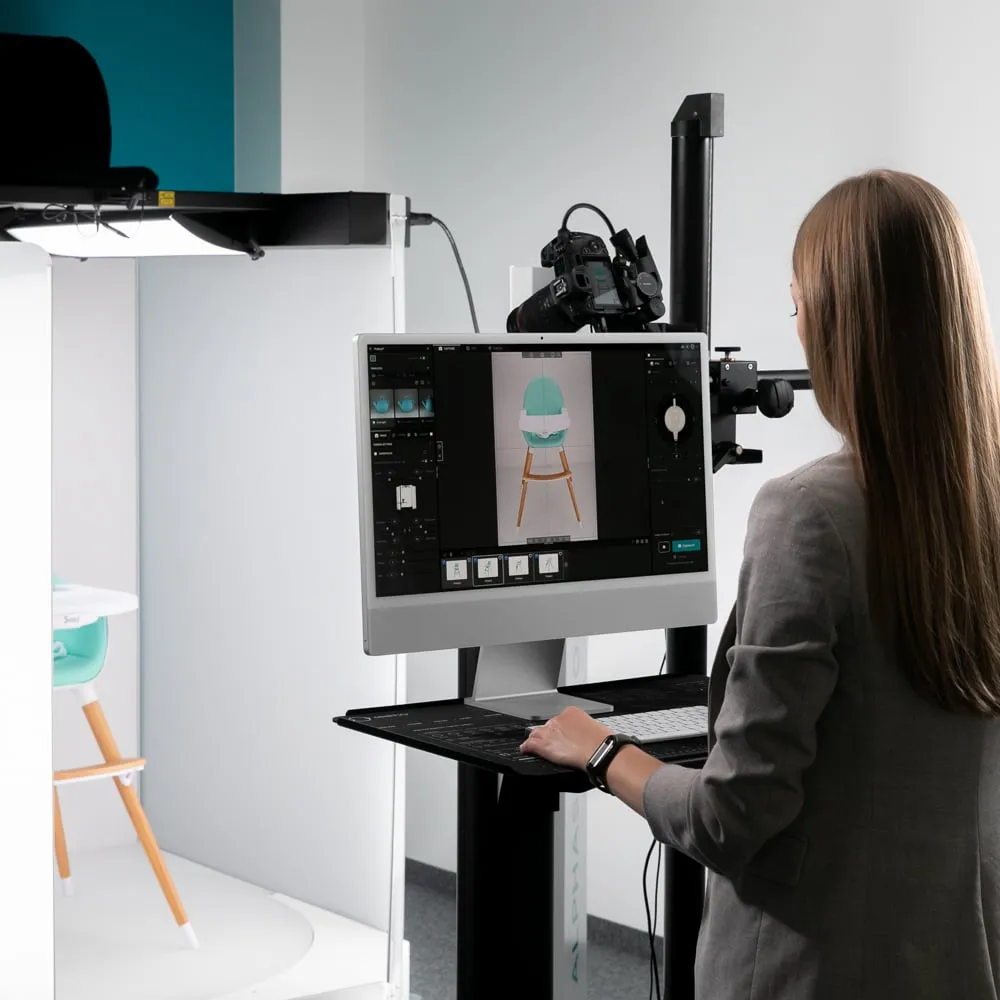

Your internal photo studio: 3 best practices to organize it effectively in 2025
Having a powerful internal photo studio has become a strategic advantage for many companies operating in sectors such as e-commerce or fashion. To meet the growing demand for high-quality visuals while optimizing costs and timelines, here are three essential best practices for maximizing the potential of your in-house photo studio.
Best Practice #1: Strategic planning
Planning is the key to an effective in-house photo studio. It optimizes resources, reduces costs and ensures the smooth production of quality visuals.
Establish a detailed production schedule
Create a specific schedule that includes:
- The number of products to be photographed and the types of views needed
- Required product information (numbers, specifications)
- The location of the products and their availability for the shooting
- The necessary preparation steps before shooting
- Inventory constraints
- The process of delivering and returning products to the studio
- The human resources needed for each session
- Post-production needs (formats, characteristics)
Use appropriate project management tools
Adopt solutions like Asana or Trello to centralize project planning and monitoring. These tools allow better collaboration between teams and a clear vision of the progress of productions.
Anticipate peaks of activity
Identify periods of high activity (product launches, seasons) and plan accordingly. Plan additional resources or consider automation to manage these spikes without compromising quality.
Best Practice #2: Optimizing Production Through Technology
Integrating advanced technologies can dramatically improve the efficiency and quality of your visual production.
Adopting automated photography solutions
Systems like the Alphashot Pro G2 from Orbitvu are revolutionizing product photography. With its 74 independent light sources and its AI photo assistant, it allows you to capture high-quality images, even for the most complex products, in record time.
Key benefits:
- Automatic lighting and camera setup using AI
- Precise lighting control via an intuitive interface
- Motorized turntable for 360° shots
- Advanced masking technology for products that are difficult to photograph
Implement a robust digital workflow
Use workflow management software like ShotFlow to automate repetitive tasks:
- Entering product numbers
- Naming images and views
- Follow-up of the shots
- Uploading and organizing images
Good workflow software can double daily image production.
Train your team in new technologies
Invest in the training of your photographers and assistants to get the most out of modern equipment. A well-trained team is more productive and creative.
Best Practice #3: Creating images adapted to all needs
To maximize the efficiency of your studio, it is crucial to produce visuals that meet the needs of all departments in a single session.
Conduct a complete audit of image needs
Ask each user group about their specific needs:
- Required image sizes (in pixels)
- Background types (white, colored, with or without shadows)
- Product presentation (packaging included, separate parts, etc.)
- Required views (face, profile, details, etc.)
- File formats and technical specifications
Create versatile shooting templates
Develop lighting and shooting configurations that capture all the variations you need in a single session. The ALPHASHOT PRO G2, for example, allows these configurations to be saved for quick and consistent use.
Integrate post-production into the workflow
Use batch editing tools like Adobe Lightroom or Capture One to efficiently process images according to the various specifications required.
Leveraging AI for personalization at scale
Platforms like BrightRiver use AI to automate the retouching and personalization of images according to various criteria (background, color, format), making it possible to quickly meet the varied needs of different departments.
Conclusion
Organizing an effective in-house photo studio in 2025 is based on careful planning, the adoption of advanced technologies, and an approach that focuses on the multiple needs of the business. By following these three best practices, you can create an in-house photo studio that can produce high-quality visuals, efficiently and adapted to all your needs.
Remember that even with a well-organized in-house studio, you can still benefit from the expertise of professionals. At PackshotCreator, we offer coaching, support, services and training solutions to help you get the most out of your in-house photo studio. Do not hesitate to contact us to find out how we can help you optimize your visual production.
The internal photo solution: a strategic asset for your business
You have taken the crucial steps: planning production needs, preparing the studio, allocating the necessary resources, and defining your deliverables in detail. However, setting up an in-house photo studio doesn't mean you have to navigate this complex universe alone.
Expert support to optimize your studio
PackshotCreator and its partners like Orbitvu offer comprehensive support, support, services and training solutions.
State-of-the-art technologies for increased productivity
Intelligent Workflow Management
Integrate tools like ShotFlow to automate repetitive tasks and improve the management of your photographic projects.
Continuing education and personalized support
Take advantage of the Orbitvu Experience Center to Levallois for practical training and tailor-made support, allowing you to stay at the forefront of product photography techniques.
To deepen your knowledge and optimize your profitability, consult our white paper:”E-commerce photos: the golden rules of profitability and automation“. This essential guide will provide you with the latest strategies to excel in product photography in the age of digital commerce.

Another subject: How to master blur in product photography



